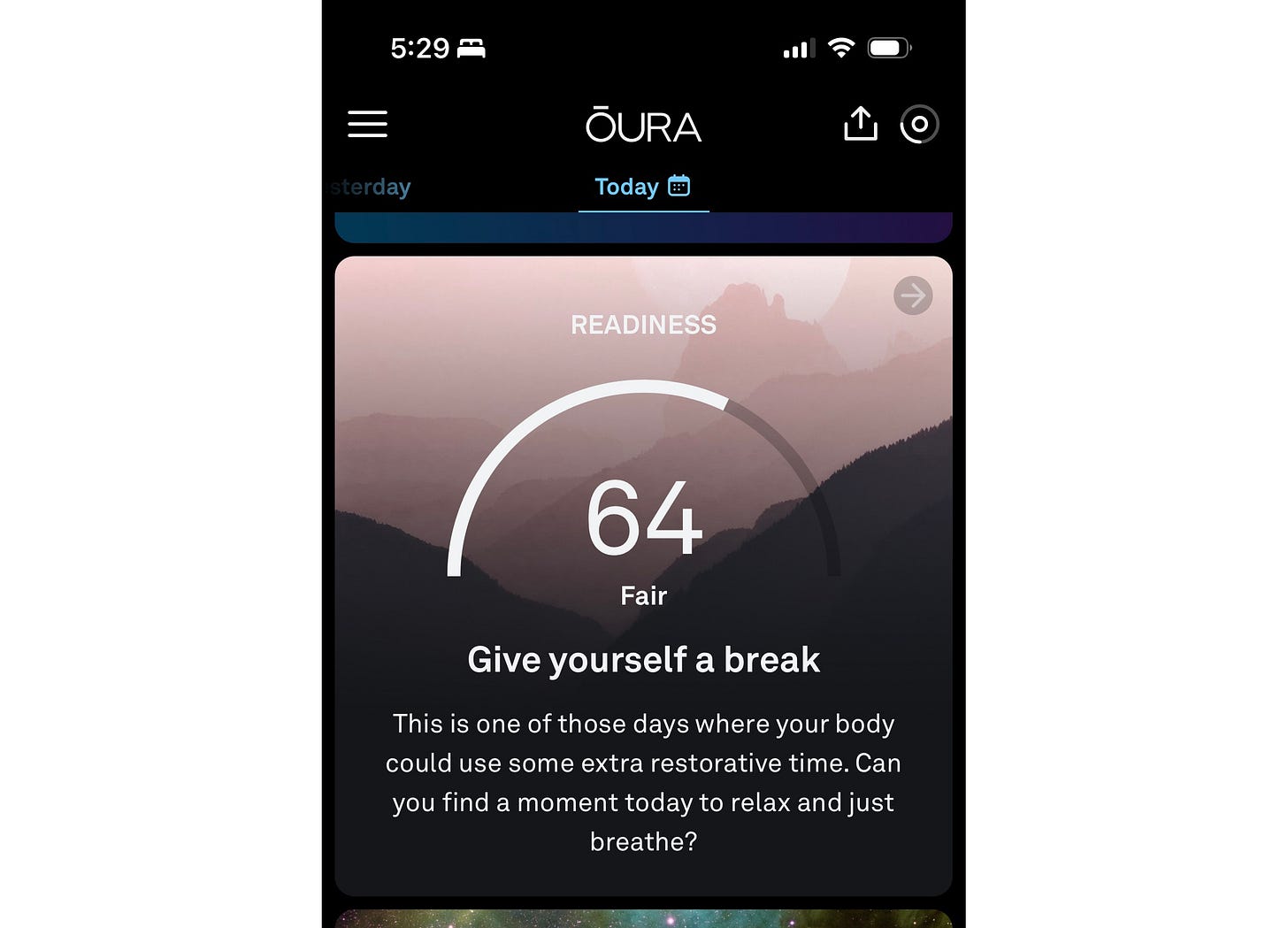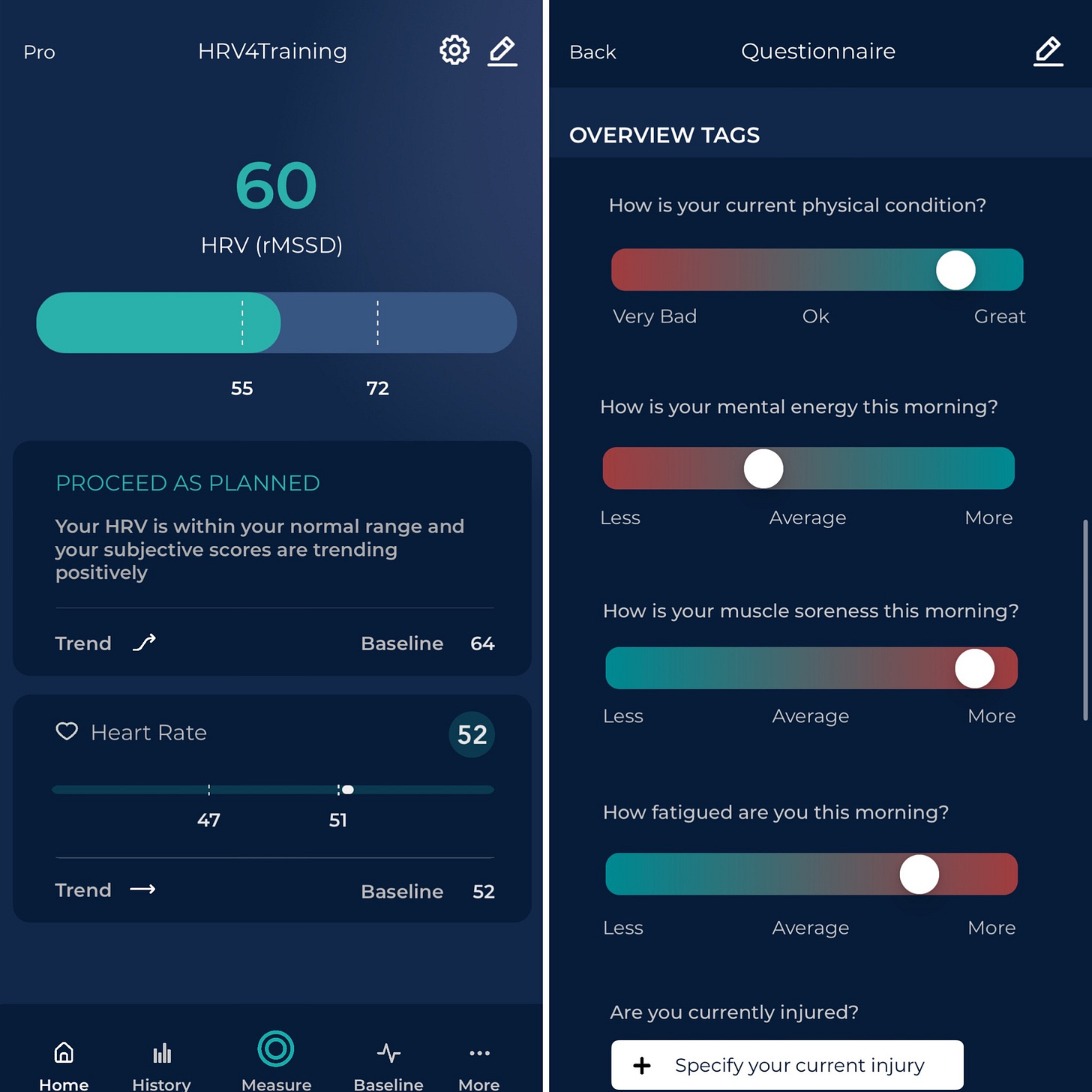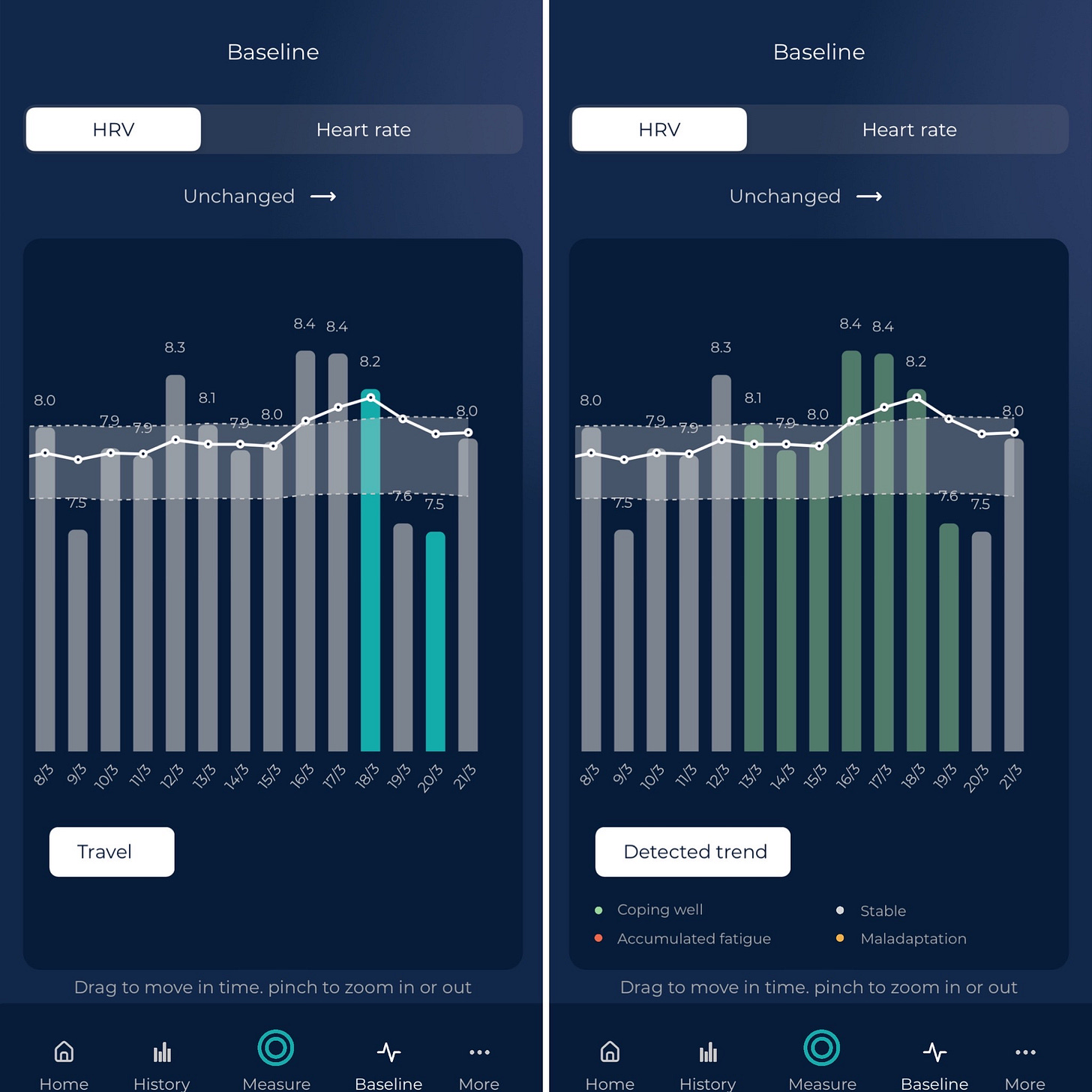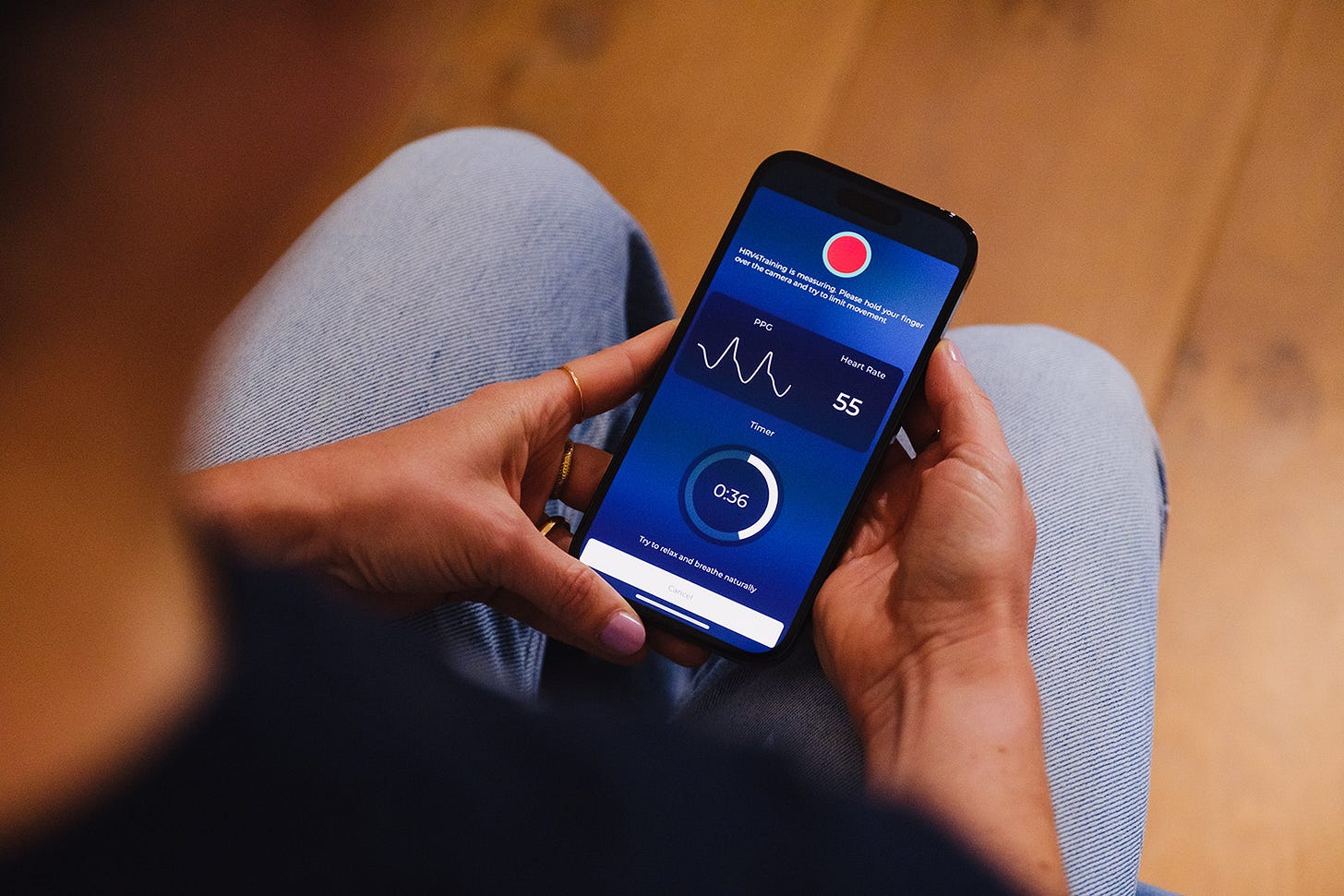Week 8: Physiology (heart rate, HRV), or readiness/recovery scores?
Key differences to understand
hi there 👋
I hope everything is well.
Last week I raced a half marathon personal best at the Barcelona half marathon, and I will take this opportunity to show important differences between resting physiology (heart rate, HRV) and made-up readiness or recovery scores, based on my data before and after the race.
These are key aspects to understand if we want to make use of wearables effectively.
Physiology and subjective feel after the race
Looking separately at the physiology and how we feel is key:
a positive response to a hard effort (i.e. HRV within normal range after a race), highlights good fitness and our ability to quickly bounce back from stress. Your race matched what your body could take.
other aspects do require more time to re-normalize (muscle soreness, sometimes also mental fatigue), and can only be captured by you.
It is pointless to pretend that we can determine "readiness or recovery" by mixing up a bunch of automatically collected parameters.
In fact, apart from resting physiology, the remaining useful information can only come from you, via a questionnaire (a great moment to reflect and improve self-awareness, often the opposite of what you do with a wearable).
For yourself and your athletes, looking at the physiological response after a hard effort can be very insightful: you want HRV to re-normalize quickly. Stability is key to further improvement over time.
This is the same in training: a hard session should not trigger a reduction in HRV.
If HRV does reduce, it means that you are training poorly: i.e. the demands of the workout do not match what your body can do. Park your ego and try again.
Physiology + subjective feel + context.
Measure intentionally, learn from your body's response, adjust, and improve.
Wearables before the race
It all went very well.
But what was the prediction on race day, for wearables?

Let’s try to understand why I have received the message above.
It comes down to 1) poor context around physiological changes 2) issues with mixing behavior and physiology to generate advice, something I’ve discussed a few times before.
Starting with the physiology, I ate more carbs the prior 2 days, and also later in the evening on the night before the race: this elevates my night heart rate, and of course, it has nothing to do with my readiness (if anything, it will make me more ready, which is why we do eat more carbs before a race, but obviously, the device can only pretend to know, because they will never know the context and will interpret a small increase in heart rate as negative).
Physiology isn’t as trivial as high heart rate = bad, low heart rate = good. There’s a normal range, and there’s context. Let alone that night data overemphasized your behavior the previous night, as opposed to your readiness for the day (discussed here).
I then slept less, harder to fall asleep as I was quite excited about the race, and then I had an early wakeup because that's how an early race works.
You mix it all and you get the text you can read in there: stay in bed instead of racing a personal best.
Make no mistake: these devices are built to guide you. That's why the physiology is something you need to look for, not what you are presented with when you look at it.
This is why I always say that you can use wearables to collect some useful data at certain times (e.g. night physiology), and you can combine that information with your training plan, but you cannot possibly use a wearable for daily guidance: it is missing much of the picture, it has no context, and even worse - for athletes - it mixes your physiology and behavior, giving you the false impression that is more insightful, while in fact, diluting the insight. Few people get great sleep before an important race, and yet we can execute extremely well. Behavior should be used as context, not as part of readiness or recovery scores, as otherwise we will get even more dysfunctional behaviors (see here).
If we make an effort to understand the technology inside out, then we can use it to our advantage. Wearables are great data collection devices, but we still need to do the work to contextualize the data and interpret it. No data or AI can do that for you.
The alternative is to get constantly sabotaged by made-up scores, as many people are unfortunately doing.
Discount for Pro: 20% off 🖥️
HRV4Training Pro is the ultimate platform to help you analyze and interpret your physiological data, for individuals and teams.
You can find a guide here.
Try HRV4Training Pro for free at HRVTraining.web.app or use promo code SCIENCE for 20% off.
In the app, Pro brings the normal values view, which can help contextualizing longer-term changes, as well as rMSSD on the homepage, see an example below:
See you next week!
Marco holds a PhD cum laude in applied machine learning, a M.Sc. cum laude in computer science engineering, and a M.Sc. cum laude in human movement sciences and high-performance coaching.
He has published more than 50 papers and patents at the intersection between physiology, health, technology, and human performance.
He is co-founder of HRV4Training, advisor at Oura, guest lecturer at VU Amsterdam, and editor for IEEE Pervasive Computing Magazine. He loves running.
Social:
Twitter: @altini_marco.
Personal Substack.









Great congratulations for your best in HM and also for your cool post about how to interpret the data coming from wearables even if their are a great help for active people